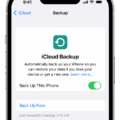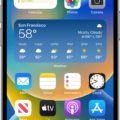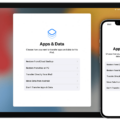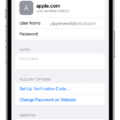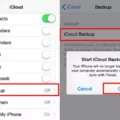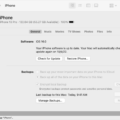IPhones have become an integral part of our lives, storing important data and memories that we want to keep safe. One of the ways to ensure the safety of this data is by using iCloud backup. However, there are times when the iCloud backup fails, leaving us worried and frustrated. In this article, we will explore the reasons behind iPhone backup failures and discuss possible solutions to overcome this issue.
One common reason for iCloud backup failure is a disconnection from the network. When your iPhone is not connected to Wi-Fi or has a weak signal, the backup process cannot be completed. To troubleshoot this issue, check your Wi-Fi connection and make sure it is stable and strong. If there is a problem with your Wi-Fi, try connecting to another network or resetting your network settings.
Another possible cause of backup failure is media failure. This can occur if there are corrupted files or incompatible media formats on your iPhone. To prevent this issue, it is important to regularly update your iPhone’s software and apps. Additionally, be cautious when downloading or transferring media files to your device, ensuring they are from reliable sources and in compatible formats.
Human error can also lead to backup failures. Accidentally canceling the backup process, turning off iCloud backup, or not having enough storage space in your iCloud account can all result in failed backups. To avoid these mistakes, double-check your settings to ensure that iCloud backup is enabled and that you have enough storage space available. If your iCloud is out of storage, consider upgrading your plan or deleting unnecessary data to free up space.
Lastly, hardware failure can also be a contributing factor to backup failures. If your iPhone is experiencing hardware issues, such as a faulty charging port or a damaged battery, it may hinder the backup process. In such cases, it is advisable to seek professional help or visit an Apple Store to get your device examined and repaired.
IPhone backup failures can be frustrating, but they can often be resolved by addressing common issues. Checking your network connection, ensuring media compatibility, avoiding human errors, and addressing hardware problems are all steps you can take to prevent backup failures. By taking these precautions and regularly backing up your iPhone, you can ensure the safety of your valuable data and memories.
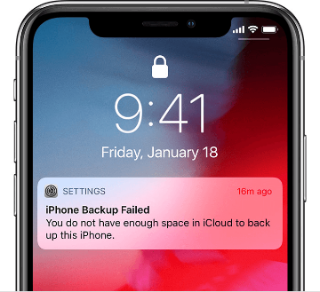
Why Does Your iPhone Backup Fail But You Have Enough Storage?
When your iCloud backup fails despite having enough storage on your iPhone, there could be several reasons behind it. One common reason is a lack of network connectivity. If your Wi-Fi connection is unstable or disconnected, it can hinder the backup process. To troubleshoot this issue, you can follow these steps:
1. Check your Wi-Fi connection:
– Ensure that your iPhone is connected to a stable Wi-Fi network.
– Verify that other devices can connect to the same network without any issues.
– Try accessing the internet or loading a webpage on your iPhone to confirm the Wi-Fi connection is working properly.
2. Connect to a different Wi-Fi network:
– If your current Wi-Fi network seems problematic, try connecting to a different network.
– Use a different Wi-Fi network, such as a friend’s or a public network, to see if the backup process completes successfully.
3. Reset network settings:
– If you continue to experience issues with your Wi-Fi connection, resetting your network settings may help resolve the problem.
– Go to the “Settings” app on your iPhone and navigate to “General” > “Reset” > “Reset Network Settings.”
– This will remove your Wi-Fi passwords and settings, so you’ll need to reconnect to your Wi-Fi network afterward.
4. Check iCloud storage:
– Even if you have enough storage on your iPhone, ensure that your iCloud storage is not full.
– Go to “Settings” > “[Your Name]” > “iCloud” > “Manage Storage” to check your iCloud storage usage.
– If your iCloud storage is full, you may need to free up some space or consider purchasing additional storage.
By following these steps, you should be able to troubleshoot the issue of your iPhone backup failing despite having sufficient storage.
Why Does It Keep Saying Backup Failed?
There are several reasons why a backup might fail, and it’s important to troubleshoot the issue to ensure that your data is properly protected. Here are some common causes for backup failures:
1. Media failure: Backup failures can occur if there is an issue with the storage media being used, such as a damaged or faulty hard drive, tape, or disk. Check the media for any physical damage and try using a different media to see if the problem persists.
2. Human error: Mistakes made during the backup process can also lead to failures. This could include incorrect settings, selecting the wrong files or directories, or accidentally interrupting the backup process. Double-check your backup settings and ensure that you are selecting the correct data to be backed up.
3. Hardware failure: Backup failures can result from hardware issues, such as a malfunctioning backup device or connectivity problems between the backup source and the storage media. Verify that all hardware components are functioning properly and that there are no loose connections.
4. Insufficient storage space: If there is not enough available space on the storage media, the backup may fail. Ensure that you have enough free space to accommodate the backup data. If necessary, delete unnecessary files or consider upgrading your storage capacity.
5. Software conflicts: Incompatible or outdated backup software can cause backups to fail. Make sure that you are using the latest version of your backup software and that it is compatible with your operating system.
6. Network issues: If you are performing backups over a network, problems with the network infrastructure or connectivity issues can lead to failures. Check your network settings and ensure that you have a stable and reliable connection.
7. Security software interference: Sometimes, security software like antivirus programs can interfere with the backup process, causing it to fail. Temporarily disable any security software before running the backup to see if it resolves the issue.
8. Corrupted files: If the files being backed up are corrupted, it can prevent the backup from completing successfully. Run a file integrity check on the data you want to back up to identify any corrupted files and try to repair or replace them.
To troubleshoot backup failures effectively, it’s important to identify the specific cause of the problem. By addressing these common issues, you can increase the chances of a successful backup and ensure that your data remains protected.
How Do You Stop Your iPhone From Saying Backup Failed?
To resolve the issue of your iPhone displaying the “Backup Failed” message, you can take the following steps:
1. Disable iCloud Backup:
– Go to your iPhone’s Settings.
– Tap on your Apple ID at the top of the Settings menu.
– Select “iCloud.”
– Tap on “iCloud Backup.”
– Toggle off the “iCloud Backup” option.
2. Check Internet Connectivity:
– Ensure that your iPhone is connected to a stable Wi-Fi network.
– Open a web browser on your iPhone and try loading a webpage to confirm internet connectivity.
3. Restart Your iPhone:
– Press and hold the power button (located on the right side or top of your iPhone, depending on the model).
– Slide the power off button from left to right to turn off your iPhone.
– After your iPhone has completely shut down, press and hold the power button again until the Apple logo appears, indicating that your device is restarting.
4. Update iOS:
– Check for any available iOS updates by going to Settings > General > Software Update.
– If an update is available, download and install it on your iPhone.
5. Reset Network Settings:
– Go to Settings > General > Reset.
– Tap on “Reset Network Settings.”
– Enter your passcode if prompted, and confirm the reset.
6. Free Up Storage Space:
– Insufficient storage space on your iPhone can cause backup failures.
– Delete unnecessary apps, photos, videos, or other files to free up storage.
7. Try a Different Wi-Fi Network:
– Connect to a different Wi-Fi network and attempt the backup again.
– This helps determine if the issue is specific to your Wi-Fi network.
8. Use iTunes for Backup:
– Connect your iPhone to a computer with the latest version of iTunes installed.
– Open iTunes and select your iPhone.
– Under the “Summary” tab, click on “Back Up Now” to create a backup using iTunes.
If the problem persists after following these steps, it is recommended to contact Apple Support or visit an Apple Store for further assistance.
Why is Your iPhone Not Backed Up in 2 Weeks?
When you receive a notification saying “This iPhone has not been backed up in 2 weeks,” it means that your iPhone has not been backed up to iCloud for the past 14 days. This notification is typically triggered when your iCloud storage is full, and there is no space available to create a backup of your device.
Here are a few possible reasons why your iPhone may not have been backed up in 2 weeks:
1. Insufficient iCloud Storage: iCloud offers limited storage space for free, usually around 5GB. If you have exceeded this limit or have a lot of data on your device, it could prevent iCloud from performing automatic backups.
2. Disabled iCloud Backup: It is possible that you have accidentally disabled iCloud Backup on your iPhone. When this feature is turned off, your device will not back up to iCloud automatically.
3. Poor Internet Connection: To back up your iPhone to iCloud, you need a stable and reliable internet connection. If you have been experiencing network issues or have been in an area with poor internet connectivity, it could be the reason for the backup failure.
4. Outdated iOS Version: Using an outdated iOS version on your iPhone can sometimes lead to backup issues. Make sure your device is running the latest iOS version available to ensure compatibility and stability.
To resolve this issue and enable regular backups of your iPhone, you can take the following steps:
1. Check iCloud Storage: Go to the Settings app on your iPhone, tap on your Apple ID at the top, then select “iCloud” and “Manage Storage.” Here, you can see how much iCloud storage is available and what data is taking up space. If your storage is full, you may need to purchase additional storage or free up space by deleting unnecessary data.
2. Enable iCloud Backup: In the iCloud settings, make sure that iCloud Backup is enabled. If it’s already enabled, you can try toggling it off and then back on to refresh the backup process.
3. Connect to Wi-Fi: Ensure that your iPhone is connected to a stable Wi-Fi network with a good internet connection. Avoid backing up over cellular data, as it may lead to additional charges or slower backups.
4. Update iOS: Check for any available iOS updates by going to Settings > General > Software Update. If an update is available, download and install it to ensure your device is running the latest software version.
By addressing these potential causes and taking the necessary steps, you should be able to resolve the issue and ensure that your iPhone is regularly backed up to iCloud.
Conclusion
When encountering an iPhone backup failure, it is important to identify the underlying cause in order to resolve the issue and prevent future occurrences. Common reasons for backup failures include network disconnections, insufficient storage on iCloud, media failure, human error, and hardware failure.
To troubleshoot network disconnection issues, it is recommended to check the Wi-Fi connection and ensure it is stable. If necessary, try connecting to a different Wi-Fi network or reset the network settings on your device.
In the case of insufficient iCloud storage, disabling the iCloud Backup function can prevent the backup failure message from appearing. This can be done by going to the device settings and toggling off the “iCloud Backup” option. Additionally, regularly monitoring and managing the iCloud storage to free up space can help avoid this issue.
Media failure, such as corrupted files or damaged hardware, can also lead to backup failures. It is advisable to check the integrity of the media files and perform necessary repairs or replacements. Similarly, human errors, such as accidentally deleting important data, should be avoided through careful handling and regular backups.
Lastly, hardware failures can cause backup failures as well. In such cases, seeking professional assistance or contacting Apple support may be necessary to diagnose and address the hardware issue.
By understanding and addressing these common causes of iPhone backup failures, users can ensure the reliability and effectiveness of their backup processes. Regularly reviewing backup settings and taking necessary precautions can help prevent data loss and maintain the security of important information.


